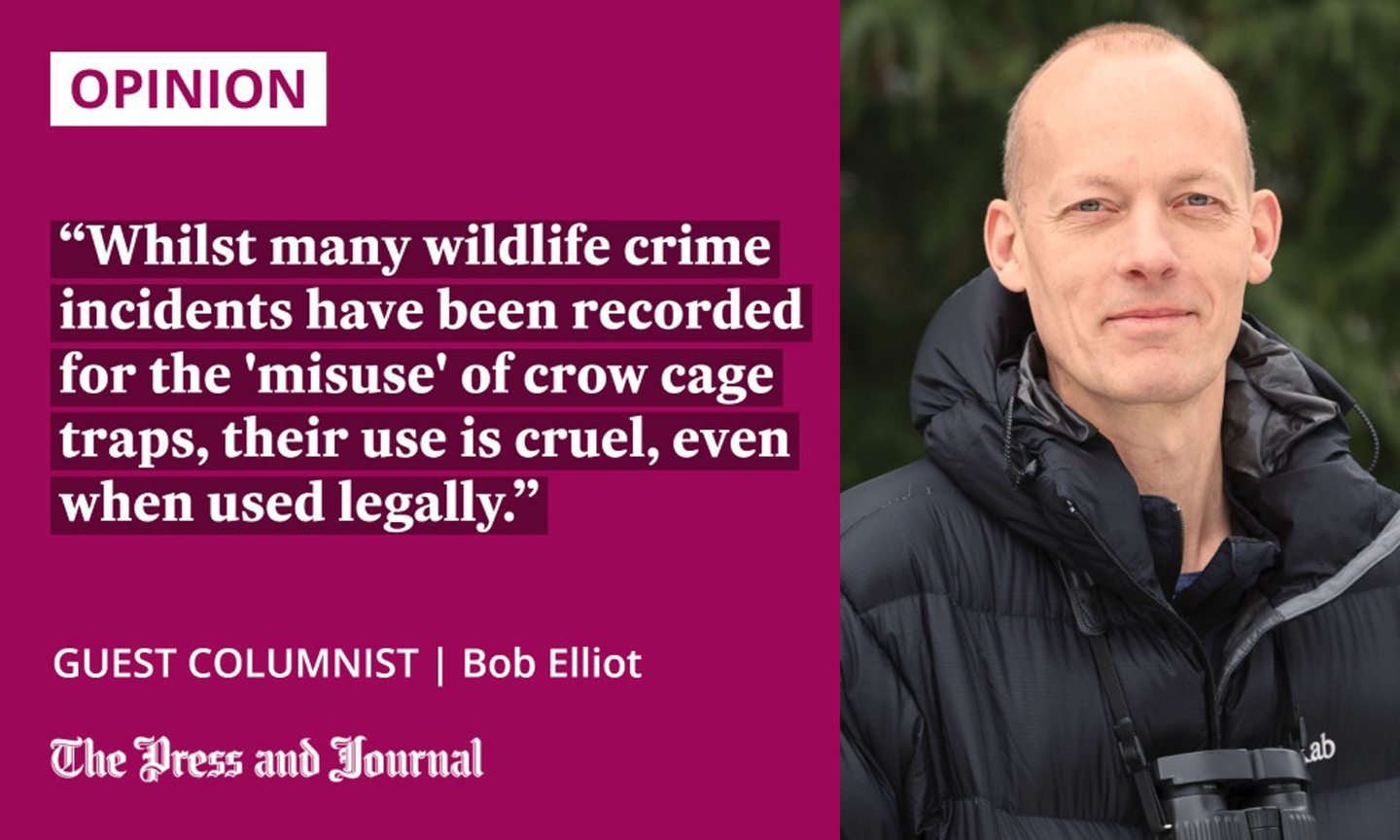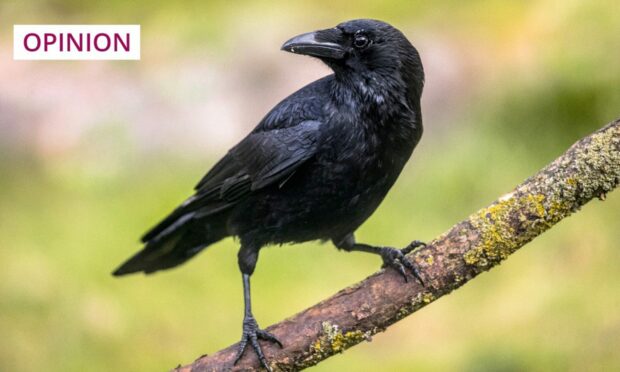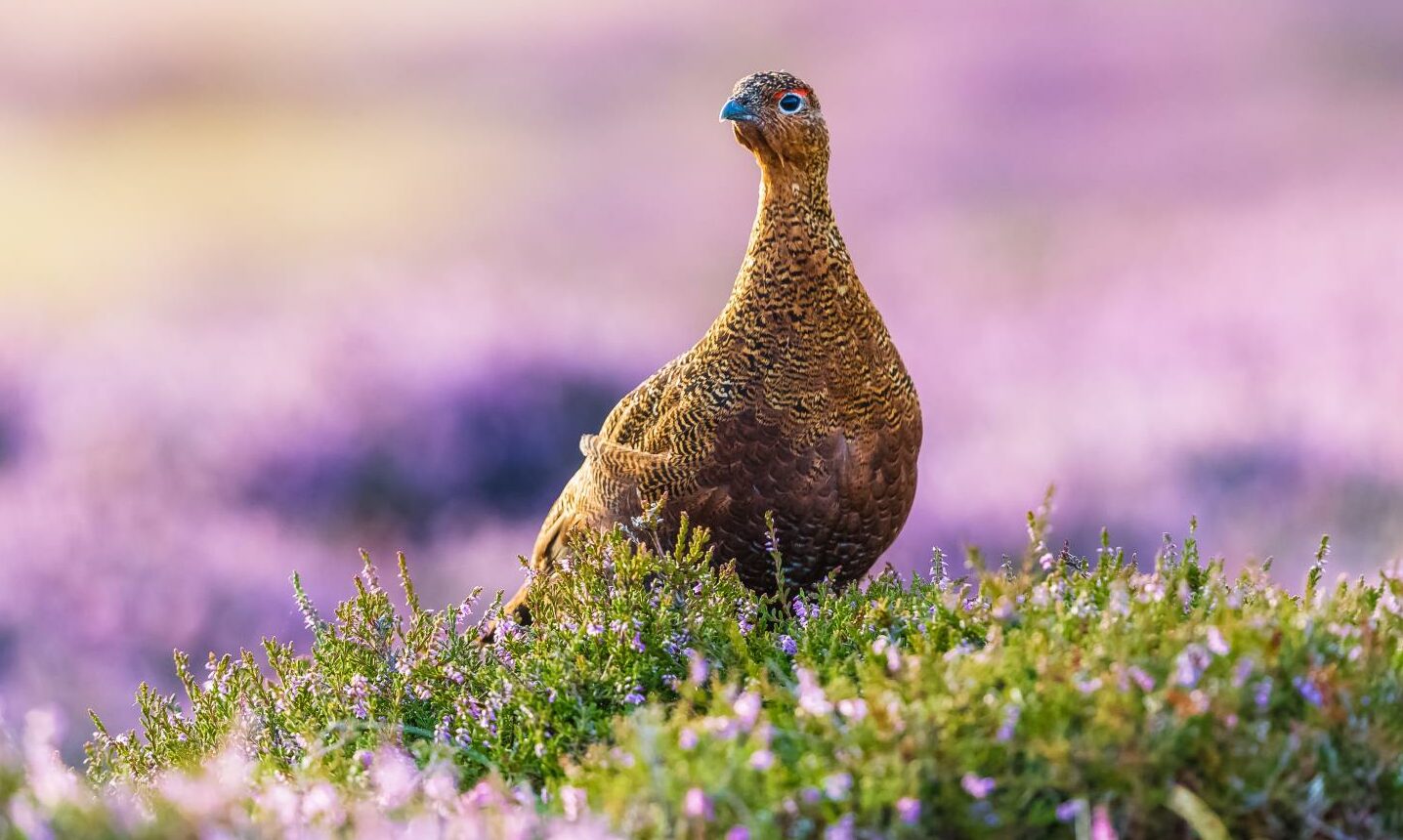At this time of the year, my thoughts always turn to the start of the grouse shooting season, or the “Glorious Twelfth”, as it is known in the shooting community.
There really isn’t anything glorious about it at all, people shooting live birds for fun.
For the shooting groups to have enough grouse to kill, the grouse moors need to be heavily managed, and the killing of predators continues unrelentingly.
In the past, I spent many a day walking the hills of Scotland, investigating wildlife crime, and would regularly come across cage traps used by gamekeepers: structures of wood and wire, incongruous looking objects in the landscape. But, did you know that crows and magpies, intelligent and sensitive birds, are routinely trapped and killed in these cages?
There are several types of traps, and they fall into two main categories: large crow cage traps, big enough for a person to enter, which are designed to catch multiple birds, and the smaller, more portable Larsen traps, which are designed to catch one bird.
Whilst many wildlife crime incidents have been recorded for the “misuse” of crow cage traps, their use is cruel, even when used legally. The impact being caught in these traps has on crows and other corvids, such as magpies, should not be underestimated.

Sudden confinement is inevitably going to be frightening and stressful for any wild animal. On top of this, crows and magpies are territorial birds, so being forced to share space with others leads to additional stress and aggression. Birds will fly about, frantically trying to escape, and can injure themselves in the process.
It is legally permitted to leave birds in these traps for up to 24 hours. After a long confinement, possibly exposed to the elements and to predation, they are killed by the person who set the trap.
This is usually done with a blow to the head, but it is not always a humane death and may take repeated hits. I remember an incident where a gamekeeper was filmed trying for several minutes to catch and kill crows in a trap, while the others flew around, panicked.
So much killing for purpose of sport is unjustifiable
Even worse, though, must be the use of “decoy” birds, used to lure other birds into the trap in a seemingly endless cycle of killing. I have seen birds enduring some of the worst Scottish weather.
On one occasion, I remember temperatures were very low, and the biting wind was blowing the rain sideways on the exposed hillside. The decoy bird in the trap remained hunched on the perch, with no shelter apart from a rudimentary box placed on the floor in the corner of the trap.
These decoy birds could be used repeatedly for weeks or months, after initially being caught themselves. They might be mutilated to cut their wing and tail feathers, so they are unable to fly.
Although there is a legal requirement to provide them with food, water, shelter and a perch, these provisions are often pitifully inadequate. Either way, they are ultimately doomed to death, and are confined so that others can meet the same fate.
All this killing so that an unnaturally high population of red grouse can be maintained for sport shooting. In my mind, it is unjustifiable.
The Wildlife Management and Muirburn (Scotland) Bill currently in parliament will bring greater regulations on the use of these traps, and we welcome that.
We would, of course, prefer to see an end to crow cage traps altogether, and will continue to campaign for the banning of their use. However, it is crucial that steps are taken now to regulate the trapping of crows and other wild animals in a way that prevents the worst suffering of wild animals on Scotland’s grouse moors.
Bob Elliot is director of OneKind, an animal welfare charity and part of the Revive coalition for grouse moor reform

